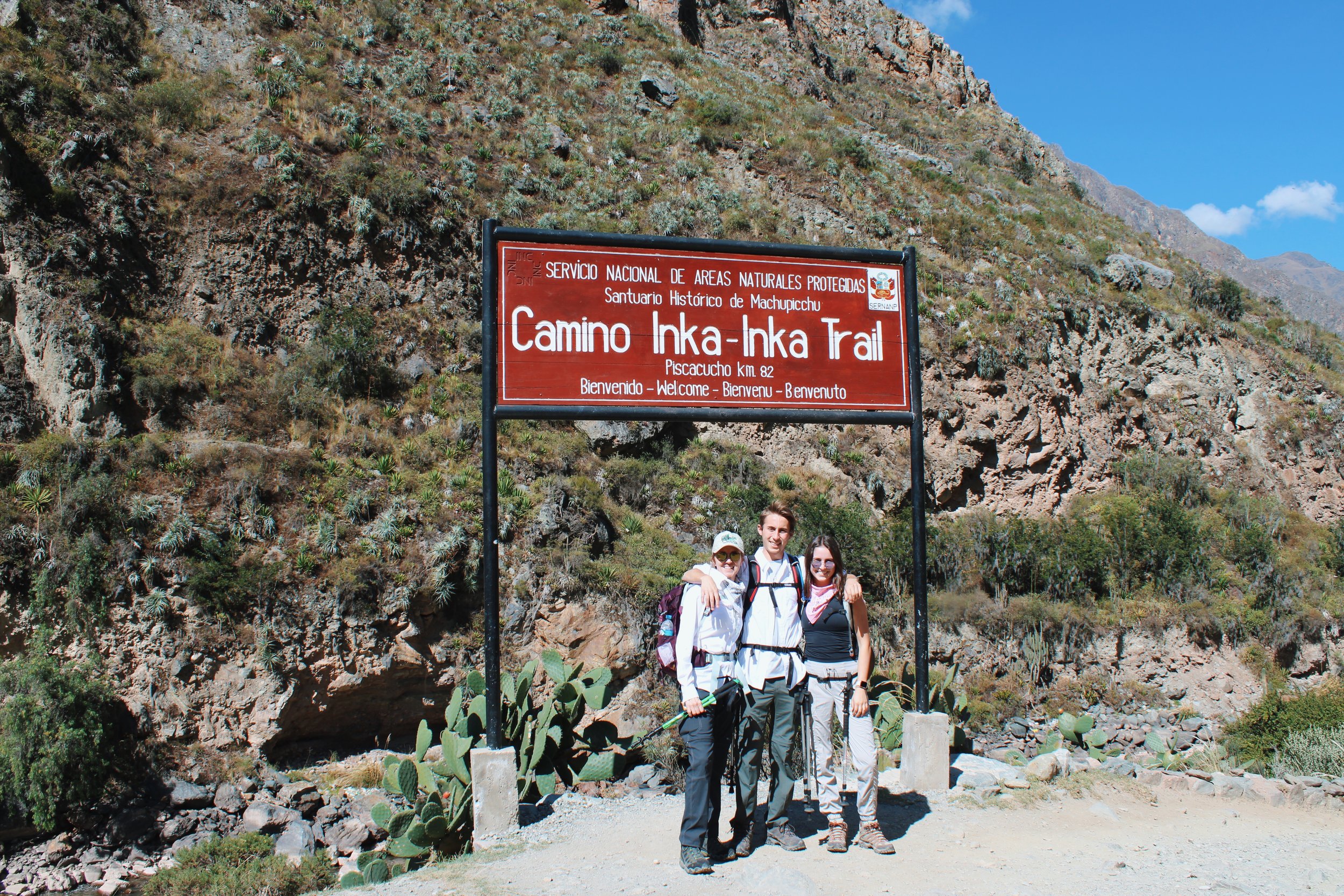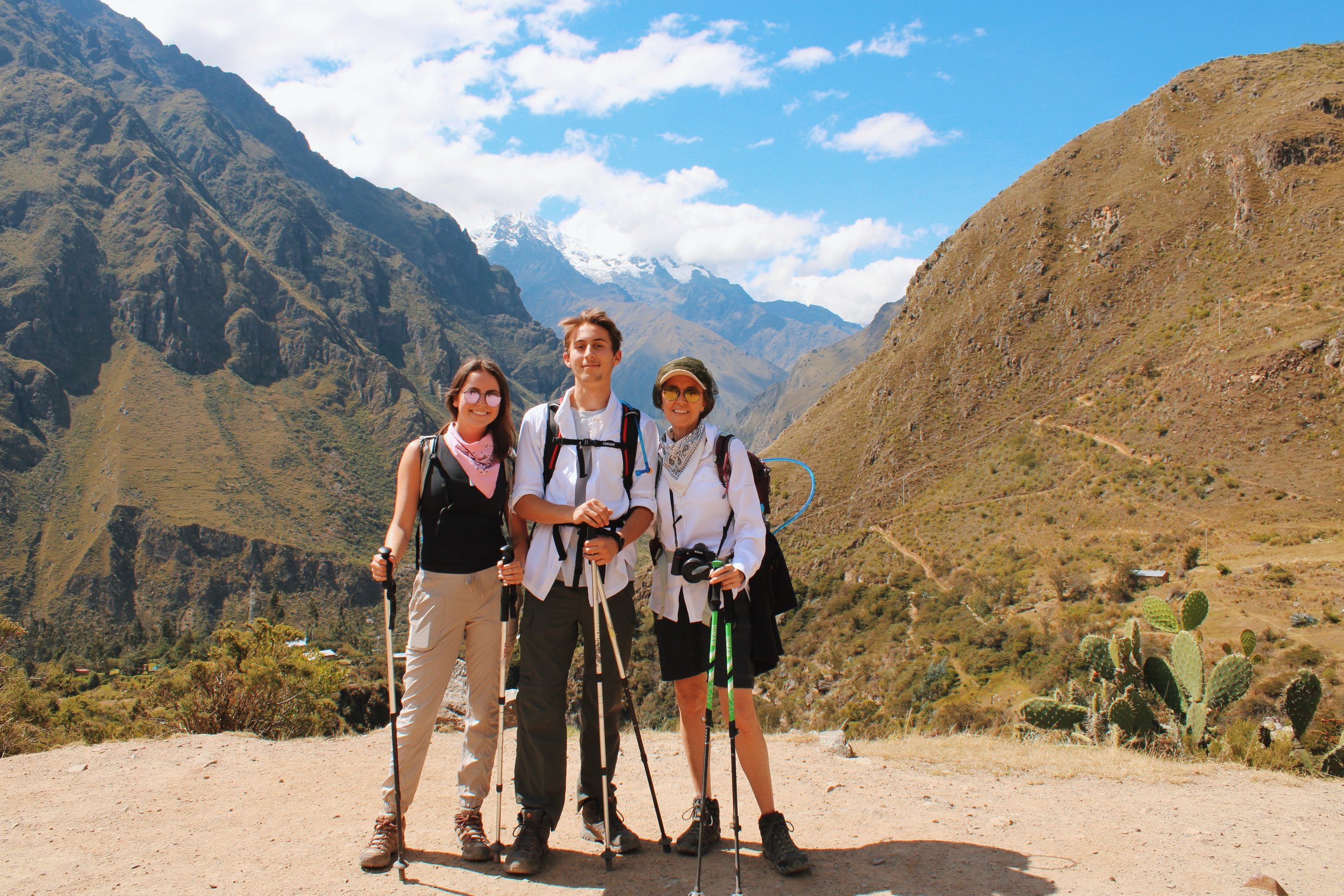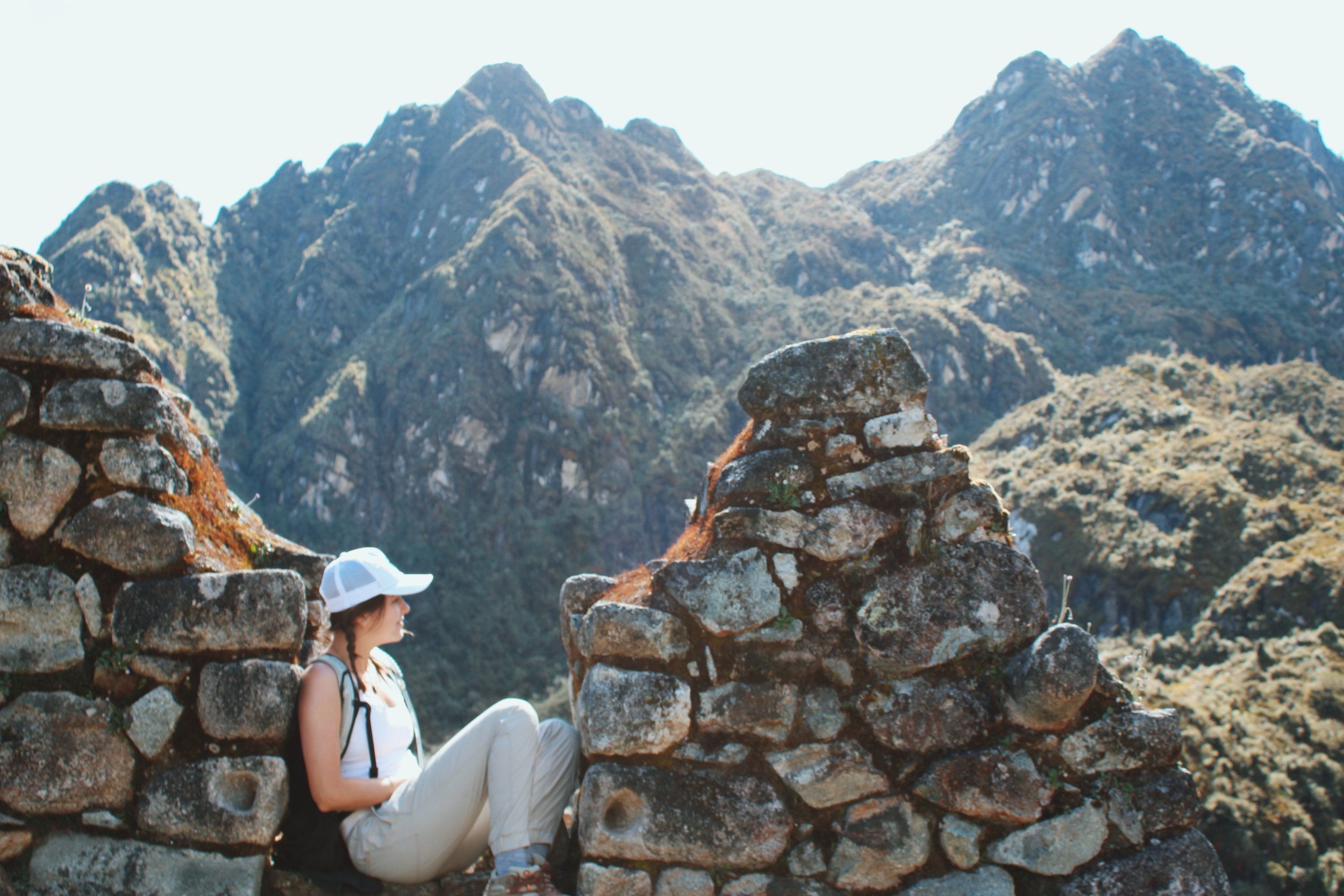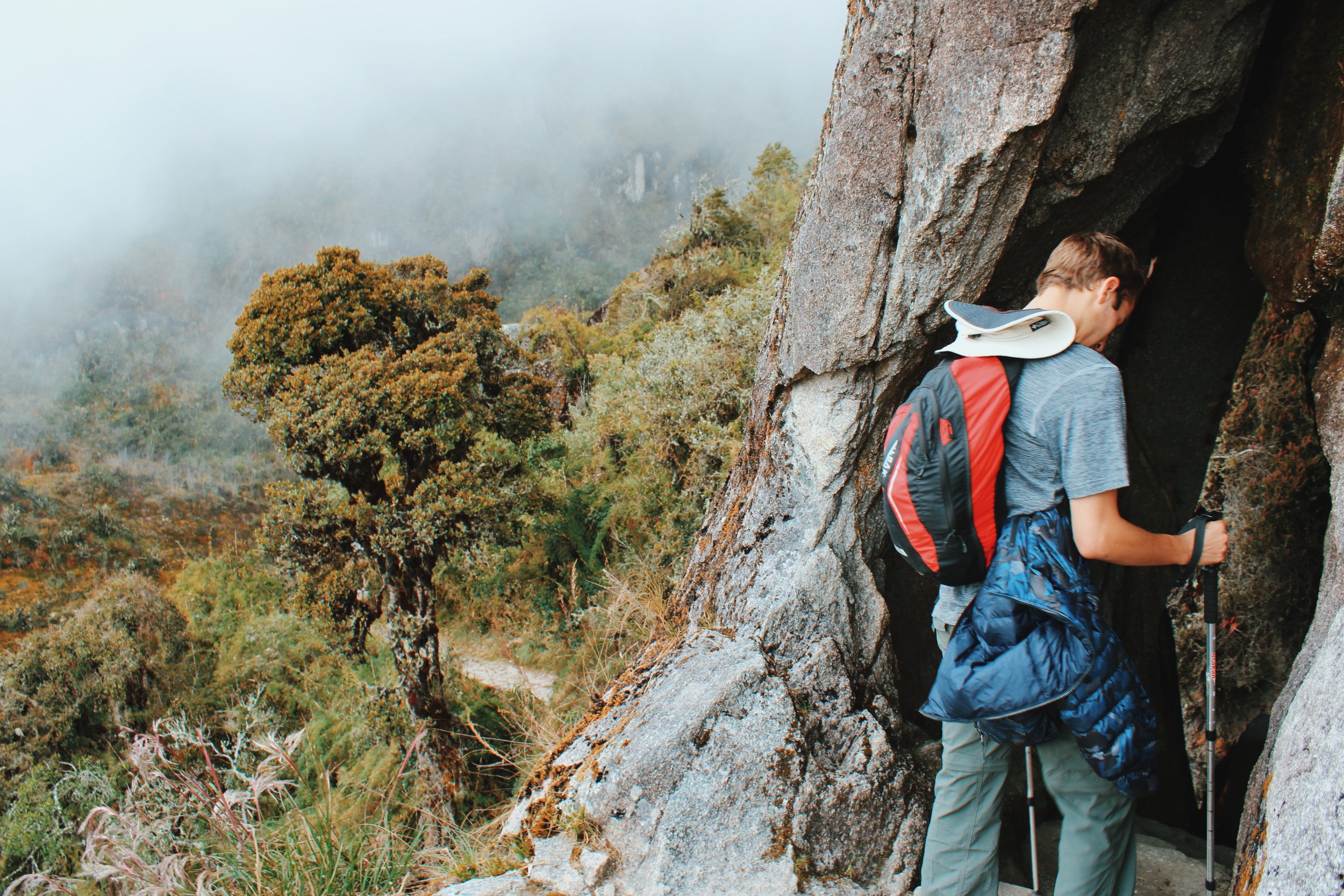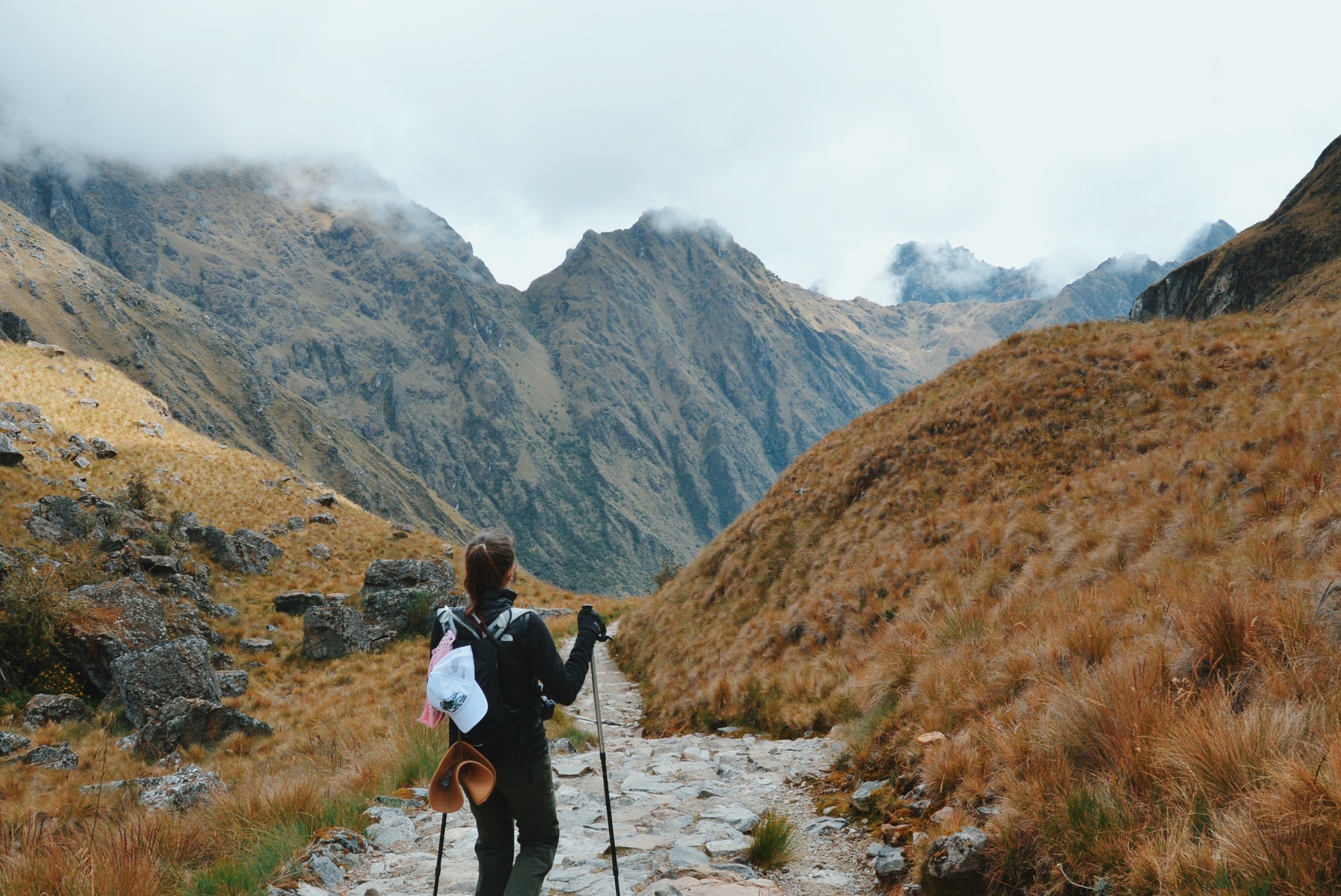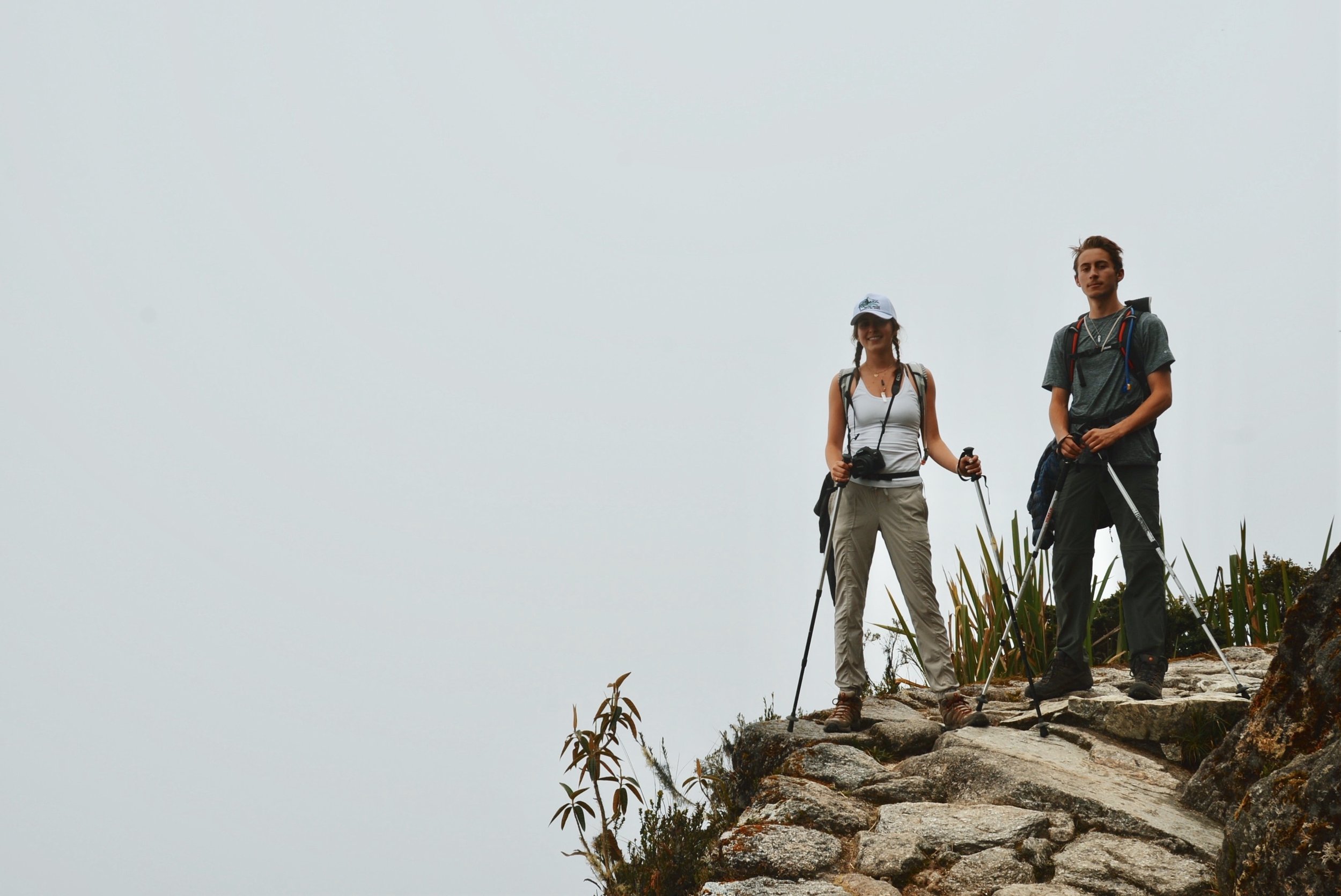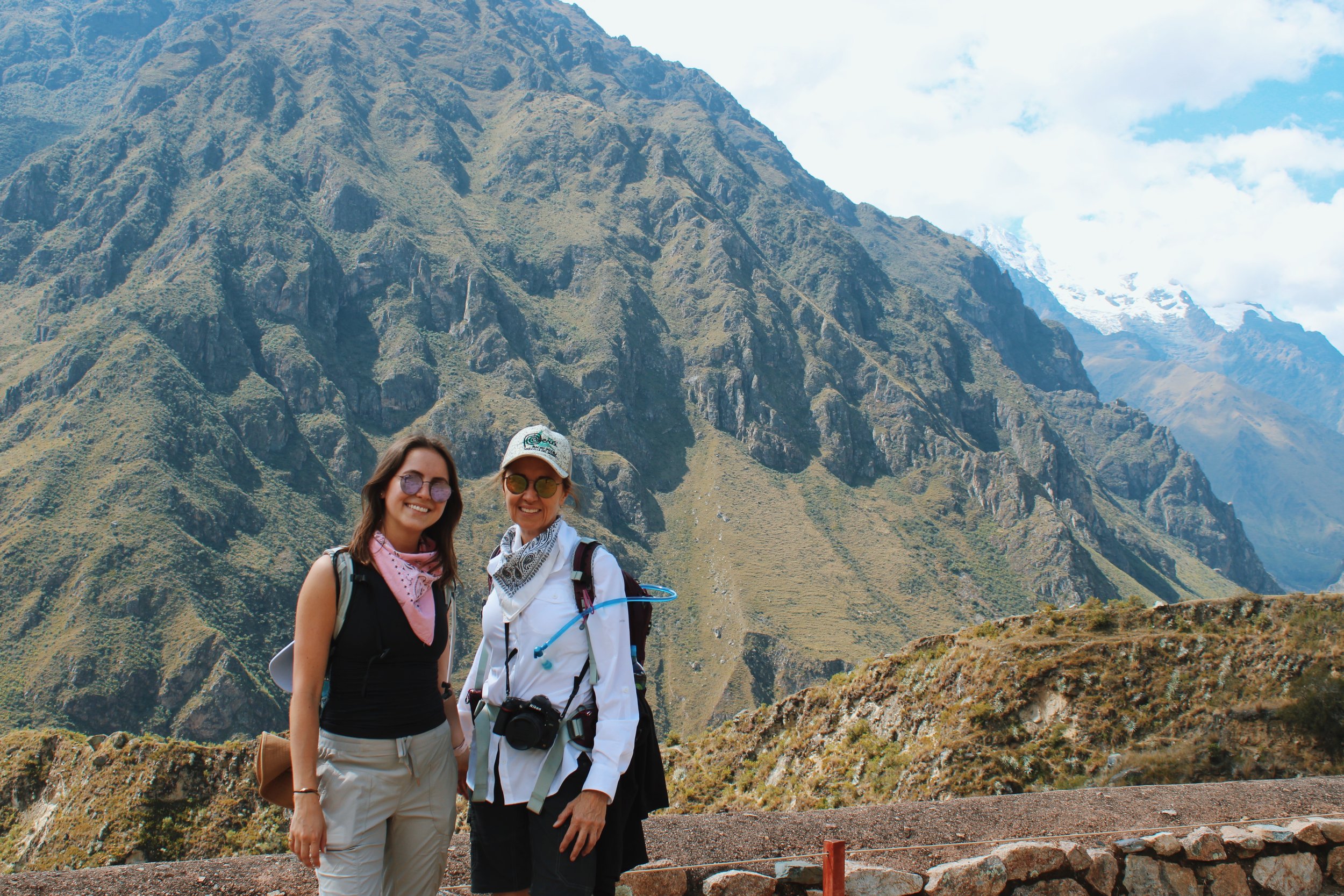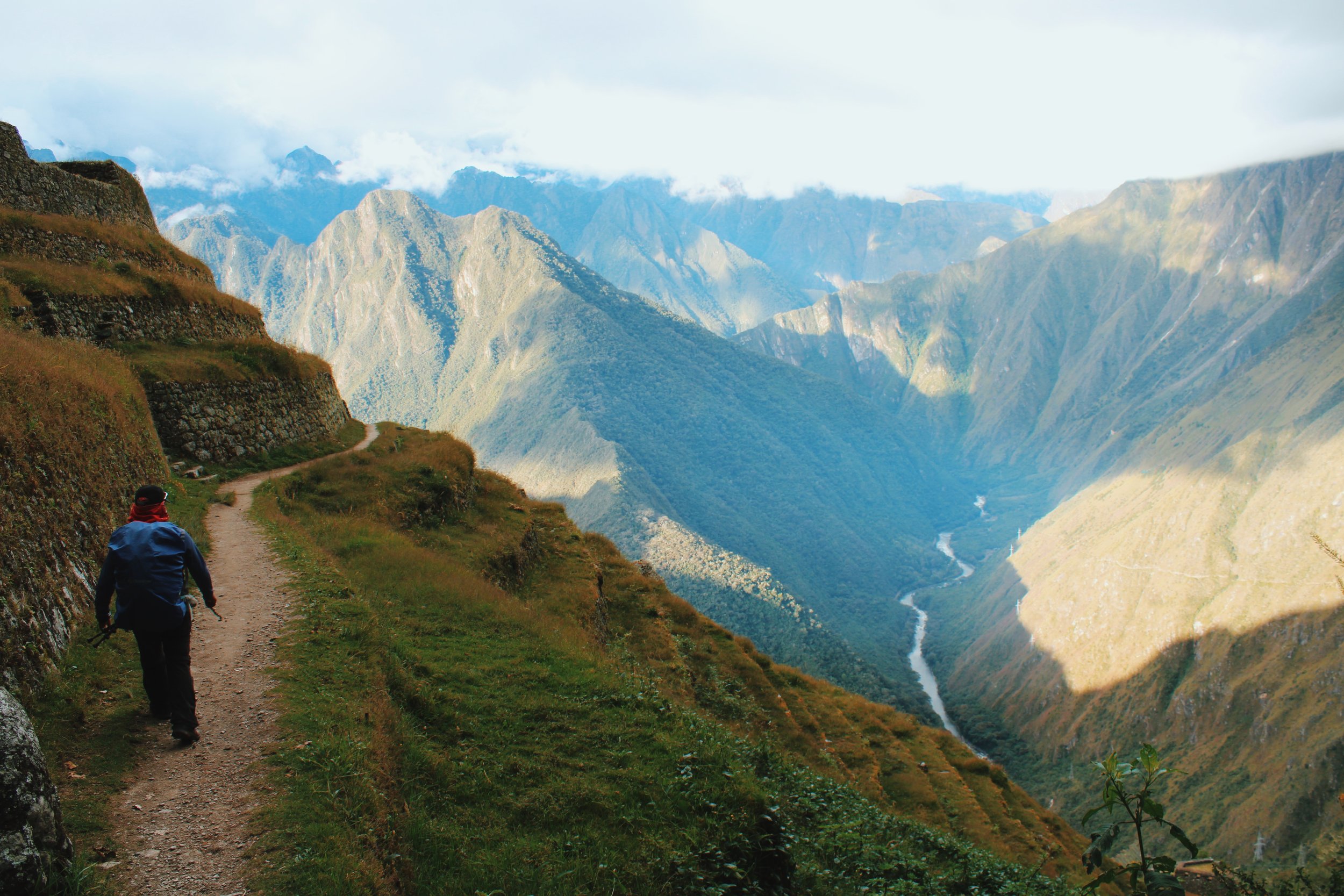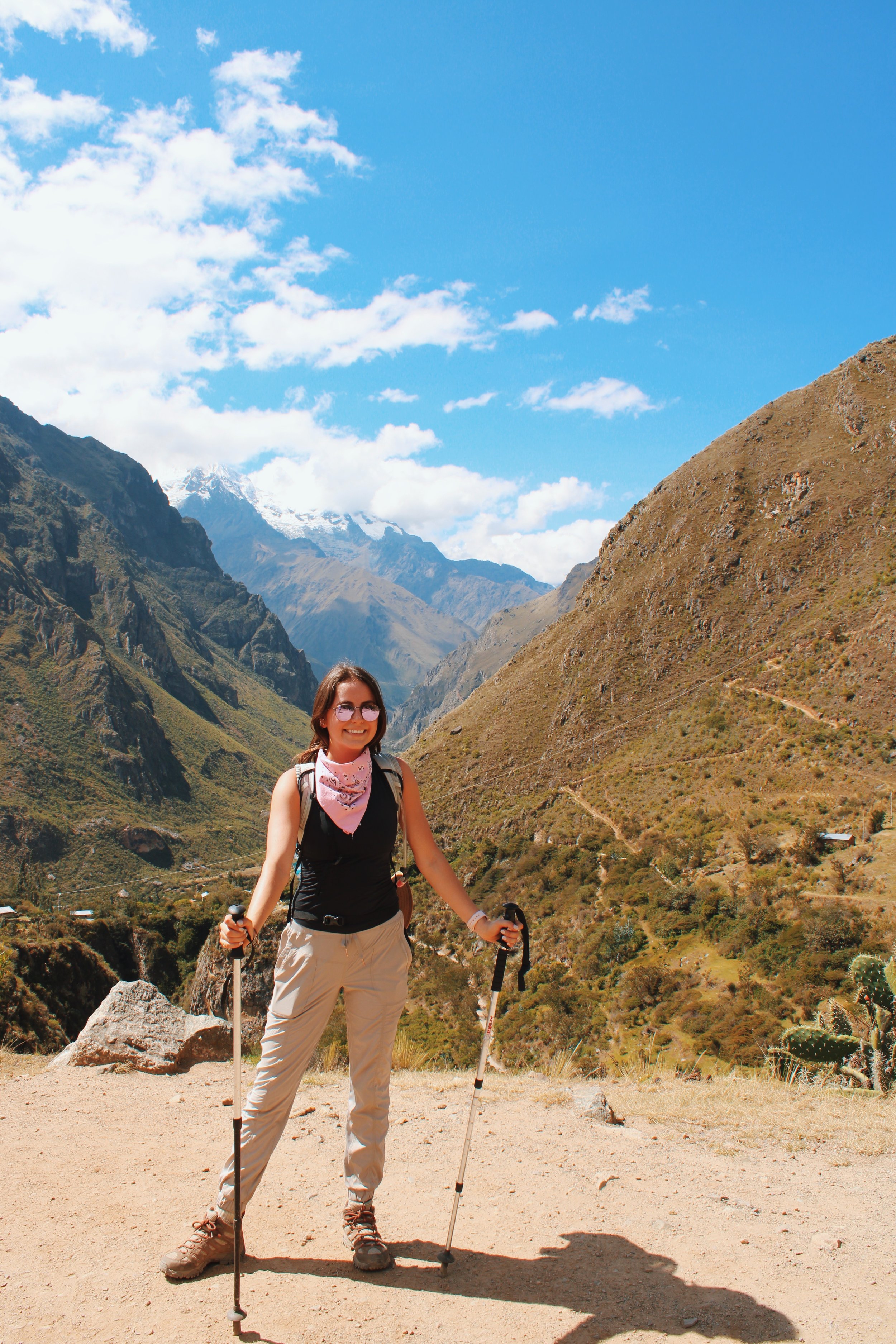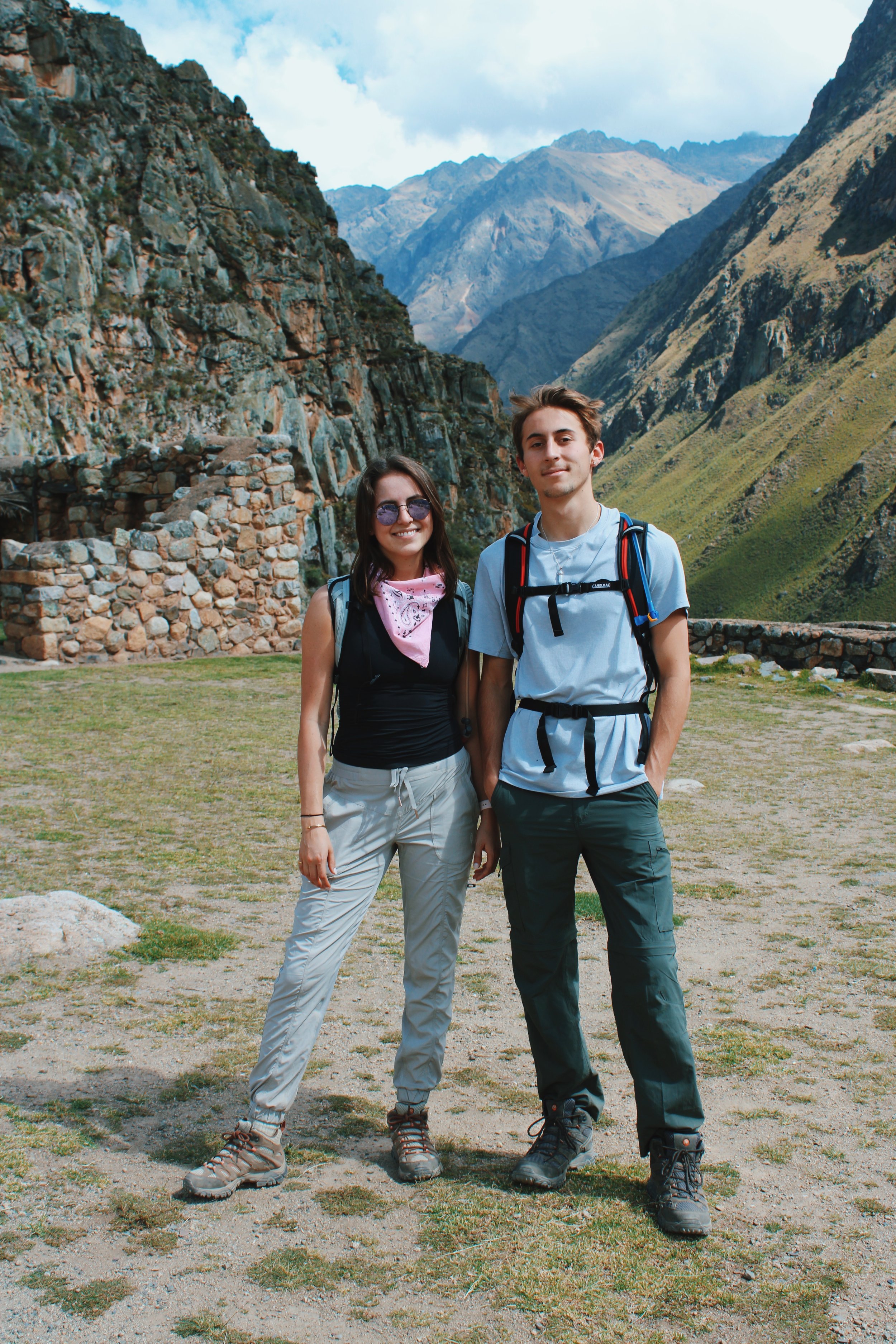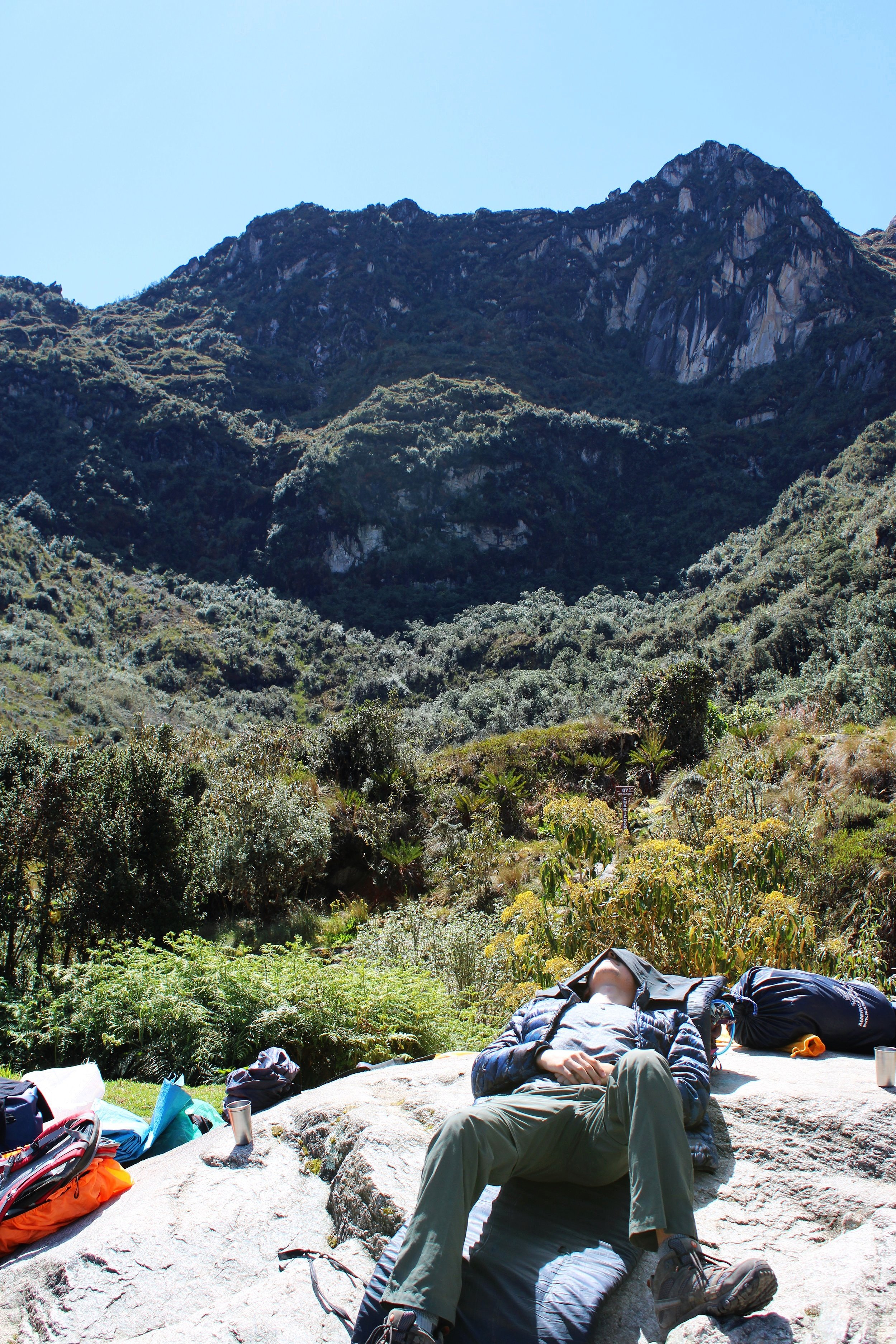Parts of Peru: Part 2
The Inca Trail
Ever since our first trip to Peru, I made it my goal to hike the Inca Trail. There is something so magical, historical, and spiritual about Peru and its history. I wanted to feel it again. Apparently, since I hiked the trail 3 years ago, there have been some advancements in accommodations. Yep, instead of sleeping in tents and eating out of tins carried by sherpas and going to the bathroom in a hole in the ground (if you're lucky), you can spend each night on the trail in a lovely cabin being served locally made hot meals. Sounds quite nice. But to be honest, if I went back, which I plan on doing, I wouldn't do it this way. Sure, the Incas didn't sleep in tents or have padded sleeping mats or sherpas to carry their belongings, but part of the whole experience of the trail was roughing it a little, getting as close to their experience and nature as possible. And to be more honest, we weren't even roughing it. Meals were cooked by local chefs in each village in the morning, our belongings and tents were already set up for us at each site, and we did get access to a real bathroom a few times along the way. It was the most unique cultural experience, and I would go back and do it the exact same way in a heartbeat.
Here's everything you need to know for a trip down the Inca Trail…
There are several tour companies you can use to guide you through the Inca trail. I highly recommend using a tour company and going with a group. It's a lot to do on your own, including hiking and camping permits, maps, food, gear, safety, etc. We used Journey Machu Picchu, and I would highly recommend them. They were reliable, accommodating, and we had a fantastic guide. You can find more information about them here. There were 3 of us hiking and only one other couple in our group, making for an intimate hike, which we appreciated. We didn't have to wait for anyone, and we got the guides all to ourselves to answer questions along the way. This is what came in the tour package:
- Pick up at the hotel
- Bilingual guide
- Porters for camping equipment
- All meals during the hike
- Chef
- Tents
- Official hiking permit
- Machu Picchu permit
- Machu Picchu guided tour
- Train ticket to Ollantaytambo train station
- Shuttle service back to Cusco
Getting There
We started our trip in the Sacred Valley. We flew to Cusco and had a driver take us down to Urubamba. The group we were hiking with came from Cusco, but we really loved the valley when we went back in 2015, so we spent a night there relaxing before starting our adventure. We stayed at Hotel Tambo Del Inka in Urubamba. Let me tell you, we took full advantage of that last night in a real bed. The company picked us up from our hotel relatively early on the morning of our hike. We stored our belongings that we didn't need for the hike at the hotel to save space and weight. From there, we drove about an hour to Kilometer 82, a famous trailhead, to begin the trek.
On The Trail
We spent 4 days on the trail going through every terrain you could imagine. We would be in a misty rainforest one minute and high above the clouds with the sun beating down the next. We would stop and rest or camp in local villages or designated camping sites. There were also some incredible historical sites that cannot be accessed unless you are hiking the trail. The history of Peru and its people is eclectic and long-lived.
Each day will be a bit different depending on what you're hiking through, where your following location is, the weather, and how fast your group is. Most days include early mornings. Breakfast will be served, and you'll get packed up before starting the hike. You'll hike for several hours and, at some point, stop for lunch. Of course, there will be various opportunities to stop for site seeing, snacks, and water. After finishing up the trail to your following sleeping site, you'll have dinner and relax for the evening or head straight to bed.
Depending on the tour company, if you choose to go with one, you might have Sherpas carrying your belongings. Most likely, they will bring food, tents, bags, and other equipment, and you will be responsible for your day pack with snacks, layers, water, sunscreen, etc. Be sure to pack as light as possible. You don't need much. I've left our packing list below.
Machu Picchu
On the very last day of the trail, the day you make it to Machu Picchu. You will likely wake up around 4 am to get in line to head to pass the Machu Picchu reserve. This is where you will show your permits for Machu Picchu. From here, you will hike to the Sun Gate, where you get the first glimpse of the incredible Machu Picchu. Once you head down, you can explore all Machu Picchu offers. If you're up to for. Hike Huayna Picchu for an added bonus. Info about that can be found in my Peru Part 1 guide.
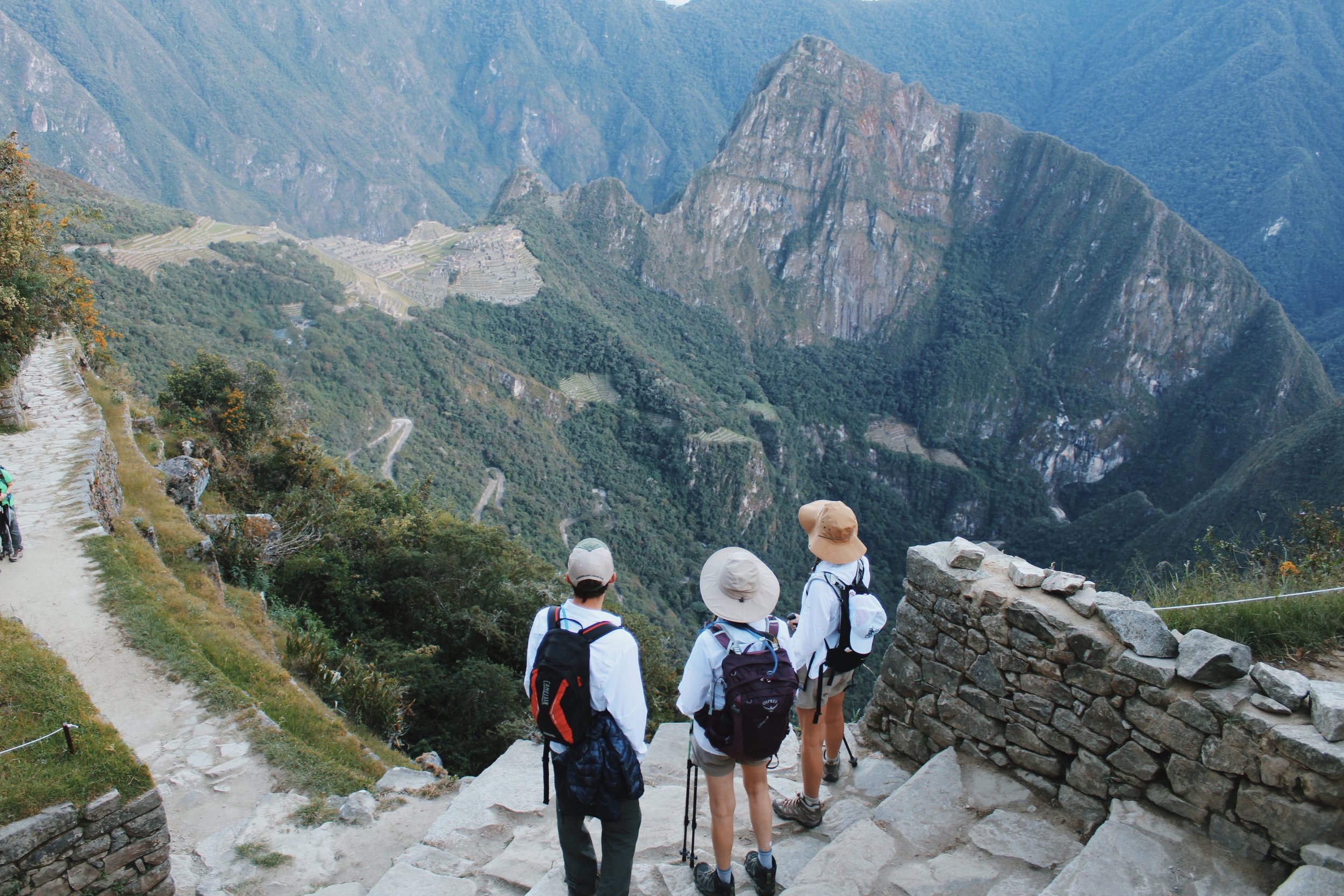
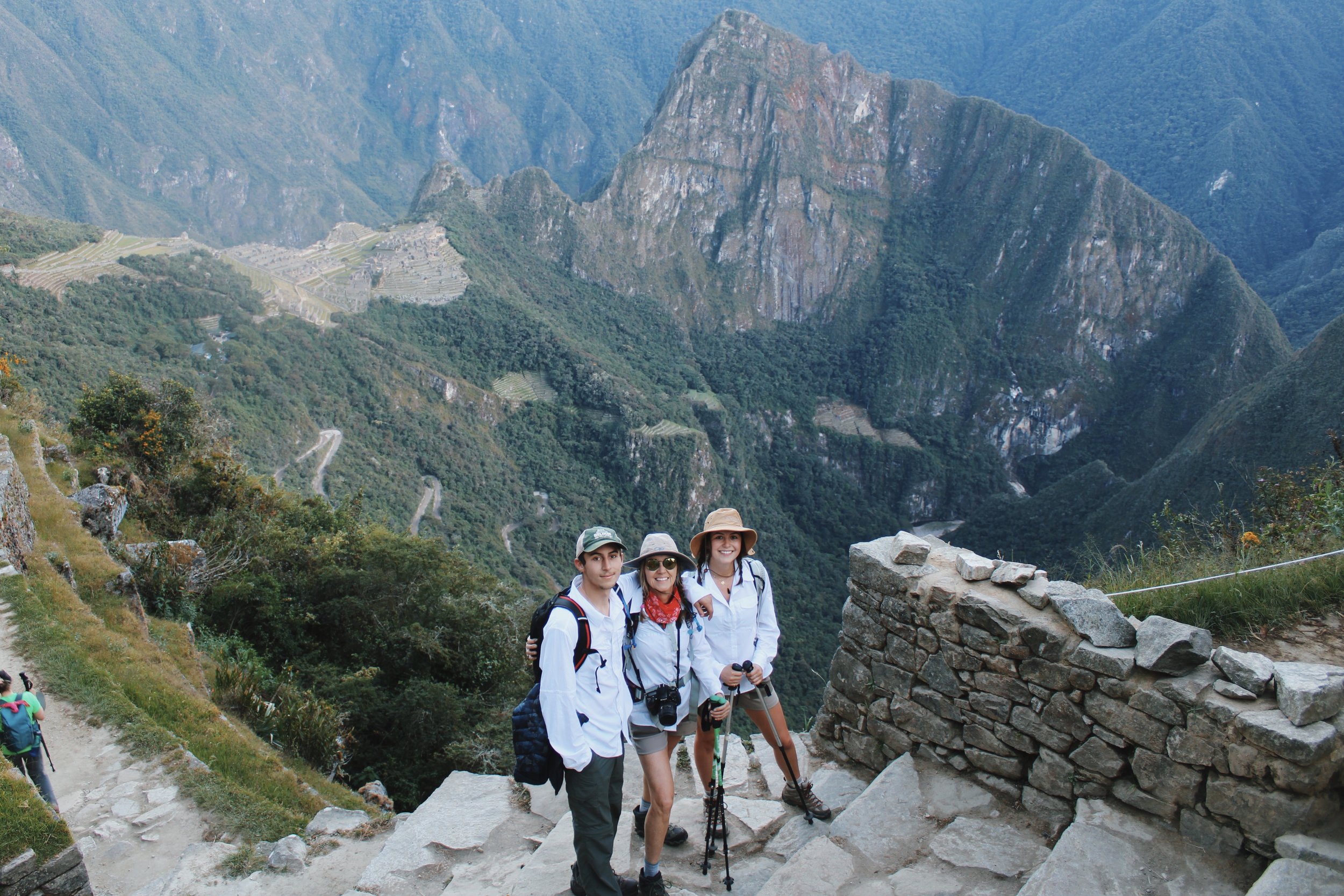
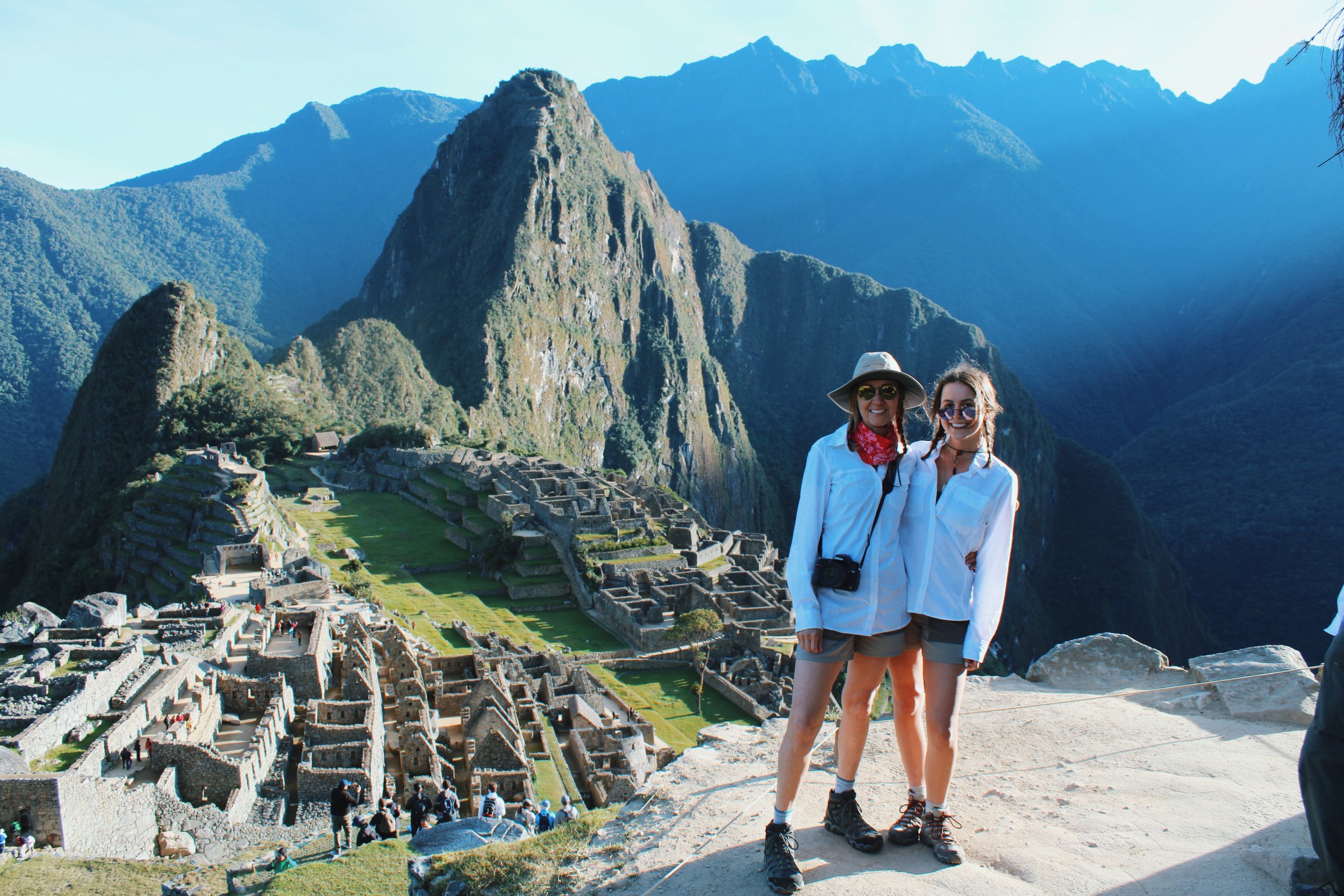
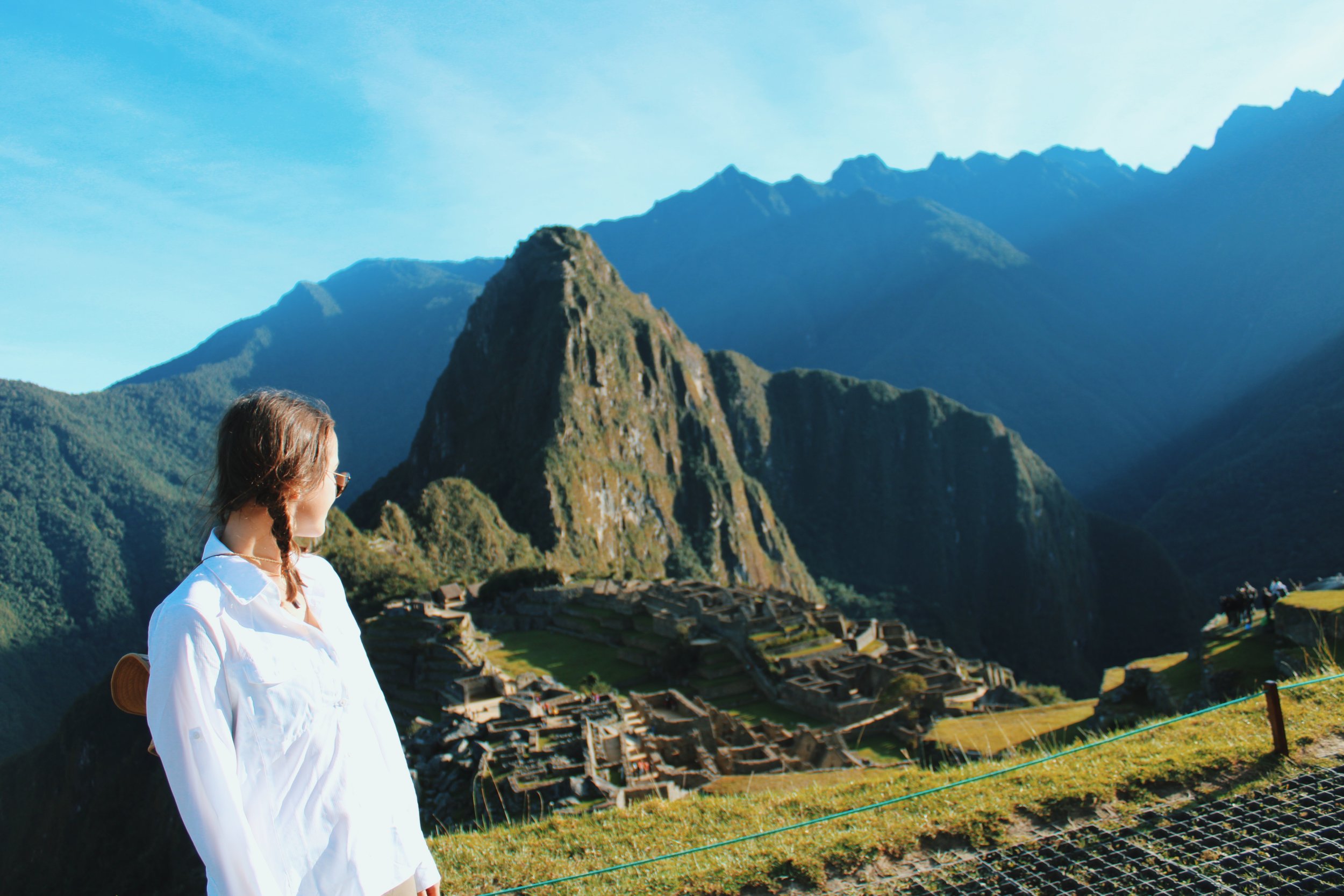
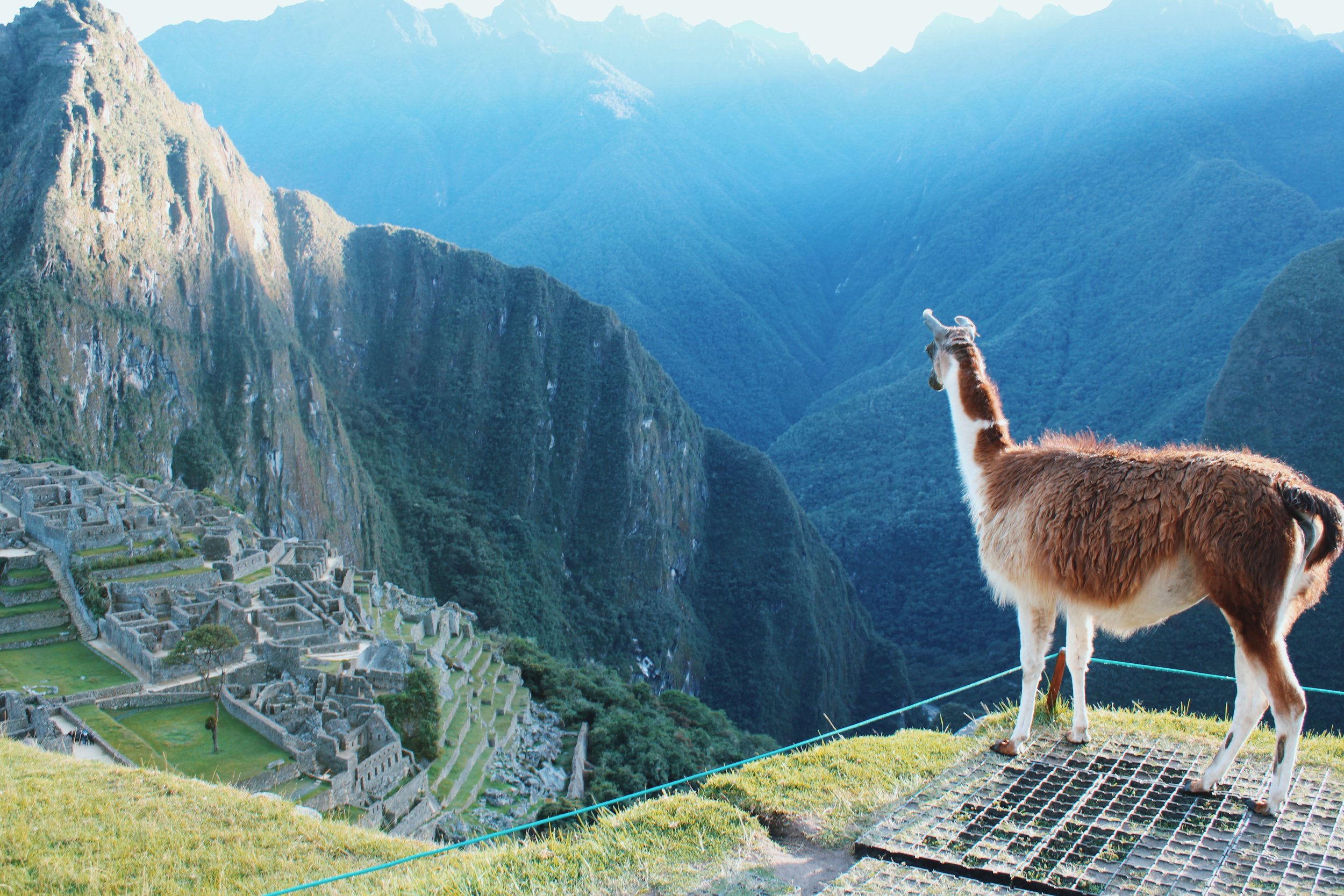
We chose to stay the night in Aguas Calientes at the same hotel we stayed at when we initially visited. We loved the hotel and loved the town, honestly. If you don't wish to stay, you can hop on the train back to Cusco. We did this the following day.
Packing List
The proper equipment is vital for any hiking or outdoor trip. Better to be overprepared than underprepared. That being said, you must be mindful about weight, whether or not you're carrying your own gear. If you are spending time in Peru before or after your hike, I recommend packing a separate bag for the trail and leaving your other belongings that won't be needed on the trail at your hotel accommodation. Most likely, the tour company will provide you with weights limits. We each brought a small duffle and a day pack, and it was enough to hold everything we needed. You don't need to look all trendy. Better to be weather resistant and warm. The evenings may get a bit chilly, and you will definitely want layers for the night. It got down to 30 degrees in the tent one night, so we slept in our down puffer coats :). However, sometimes during the day, it can be in the 80s, and you'll want to be in shorts and a t-shirt. This will vary depending on the time of year as well. I'll say it again - BRING LAYERS. And make sure to bring multiple layers in your day pack because the terrain is truly ever-changing on the trail. Ask your tour company what they provide to ensure you are not overpacking but still have everything you need.
Hiking shoes
Trekking style pants – I did, indeed, wear some that turned into shorts
T-shirts/tank tops
Lightweight, long sleeve shirts
Jacket – we brought high quality, lightweight down puffers, and they were very useful
Rain jacket/poncho – depending on the time of year, ponchos will help protect your backpack
Hat
Sunglasses
Small flashlight (headgear style works well)
Walking sticks – not necessary but useful
Reusable water bottle !!
Slides/slip-on shoes to wear at campsite
Spare socks - it will get damp and muddy in some parts, I highly suggest proper hiking socks
Easily removable clothing - during the trek, it will range from warm, cold, rainy, maybe some snow, sunny again, etc. So removing and putting clothing back on quickly is key to feeling comfortable.
Set of thermals or sweats for overnight
Sunscreen - it can be sunny and not warm, but since we are so high in altitude, you can still get pretty sunburnt
Lip balm - same principle as sunscreen, the dry wind + altitude can do quite a number on your lips
Other toiletries
Wet wipes – suitable for cleaning your body off since you will not have access to showers
Insect repellent
Any medicine you may need
Snacks!! – they will have some, but we brought trail mix, power bars, etc.
Sleeping bags - you can bring your own or rent them with the company. Likely the rest of the camping supplies will also be provided
Backpack - you don't need a big trekking backpack, just something where you can store items you want access to at all times (snacks, water, deodorant, toilet paper, etc.)
Passport & insurance
Cash for tipping the guide & sherpas
Prepping
A question I had and I'm sure others had before going on the trail or even considering going on the trail - do you need to prepare or train for the hike? If you are generally fit and healthy, I would say no. Other than maybe adding a few stair master sessions into my regular routine, I personally did not prep any differently. There are definitely some strenuous parts of the trail, and you are hiking for most of the day on various terrain. If you do not hike or exercise often, I recommend starting several months before your hike. This is primarily important because of the altitude at which you will be hiking. At some points of the trail, you are above 14000 ft, and even if you are an avid hiker, you will feel it. My mom, brother, and I were all panting at the top, making it one step at a time. But as our guide kept repeating, "slow and steady wins the race."
mood
This will be an experience you will never forget. You may not want to do it again right away, there was nothing I wanted to do besides getting a massage and sleep, but you will cherish that feeling of hard work, culture, and accomplishment for a lifetime.
Stay tuned for Part 3 coming July 2022: The Peruvian Amazon

